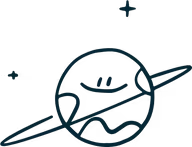If you click on a link and make a purchase we may receive a small commission. Read our editorial policy.
For Your Consideration: Marvel created a miniature MCU based on Spidey's social circle 40 years before Your Friendly Neighborhood Spider-Man
Alongside co-stars Iceman and Firestar, Spider-Man's animated Amazing Friends included the X-Men, Captain America, Iron Man, and Doctor Strange

Enjoy this complimentary article, previously available exclusively for Popverse members. If you like what you see, consider becoming a Popverse member.
The creation of the Marvel Cinematic Universe is, rightly, heralded as the masterstroke that made Marvel Studios what it is today; no longer were superheroes (or superhero properties) hemmed into their own individual worlds onscreen, but instead able to fulfill the promise of their comic book counterparts by interacting with each other in unexpected and fun ways — something that can be seen in the latest Marvel offering on Disney+, Your Friendly Neighborhood Spider-Man. But there’s the thing: 2008’s Iron Man wasn’t the first time Marvel had tried to do that kind of thing onscreen. In fact, the 1980s had an entire TV show based around the idea that heroes should and could hang out with other heroes. For your consideration, Marvelites: Spider-Man and His Amazing Friends.
This is For Your Consideration, in which we try to come to terms with the inescapable fact that, honestly, there’s too much out there to have time to watch, read, or hear everything — by making some suggestions about things that you might have overlooked but would enjoy, anyway. Think of it as recommendations from a well-meaning friend.
DC's Super Friends become Marvel's Spider-Friends

As unlikely as it may seem from today’s point of view, Spider-Man and His Amazing Friends — an animated series that was an NBC mainstay for two years between fall 1981 and late 1983 — originated from a desire to follow the lead of DC Comics. DC had translated the success of its superhero comic books into Saturday morning domination via the kid-friendly Super Friends cartoon, which represented a kinder, gentler take on the Justice League of America, and Marvel wanted its own take on that idea. Rather than directly transferring that idea onto its own primary superteam the Avengers, however, the newly-created Marvel Productions decided to take its best-selling character… and directly transfer the idea onto him, instead.
Transforming the self-conscious loner Spider-Man into a character who had a super-powered friend group of his own meant that some changes need to be made to the traditional status quo, however, and so Peter Parker’s bachelor pad became a high-tech commune he shared with two other heroes — former X-Man Iceman, and new creation Firestar — as well as a dog called Ms. Lion who was, impressively, added specifically to address network beliefs that cute animals were an animation staple. (See also Scooby-Doo, Wonder Dog, and Gleek the Monkey.)
To cement the connection between the new series and the Super Friends, the new group was referred to in the series as the ‘Spider-Friends,’ as if that was an entirely normal and not strange turn of phrase to bring into proceedings. The series debuted September 12, 1981 — but even as the first episode (featuring the Green Goblin as the villain) dazzled fans, plans were already afoot to bring in even more of the Marvel Universe to the screen, and quickly.
Captain America, Doctor Strange, and more: a very special guest-star (or several)

Although Spider-Man and His Amazing Friends focused primarily on the core trio introduced at the top of each episode, the show started bringing in other heroes to become fair-weather friends of Spidey as early as its fourth episode, when Sunfire — yes, the minor-league X-Men character, of all people — guested in an episode titled, unsurprisingly, ‘Sunfire.’ Two weeks later, the floodgates were opened in an episode called ‘7 Little Superheroes,’ which included a genuinely weird collection of guest-stars: Captain America, Doctor Strange, the Sub-Mariner, and Shanna the She-Devil, who had to be renamed Shanna the Jungle Queen to meet network standards.
It was a sign of things to come: over the next few weeks, viewers would get a chance to see big names like Thor and the Hulk as well as slightly lesser-known characters like the Black Knight as the show built out the larger world it took place in. This trend would continue in the show’s truncated — just three episodes! — second season and further into its third, which proved to be a strange footnote in Marvel canon for entirely unexpected reasons.
Spider-Man and his Amazing Friends was a stealth X-Men cartoon (with unknown X-Men)

Saturday morning audiences met the X-Men for the first time in the show’s second season, when Iceman’s origin story got retold and the original comic book X-Men appeared in flashback. Things got slightly weirder when the team showed up for their second appearance, and it was revealed that Firestar was a never-before-seen member of the team in her past — one who still showed up to group reunions, however; she’s a team player that way! — but it was the show’s final two episodes that just decided to confuse continuity obsessives by bringing in the “current” X-Men, which included both Sprite, who was in comic book continuity at the time, as well as Thunderbird, who had been dead in the comic for close to a decade by that point. Even more confusingly, the final episode of the run introduced Iceman’s super-powered sister Aurora, who just… doesn’t exist anywhere else, at all.
To be fair, the X-Men have always been a continuity nightmare, so it only makes sense that they’d complicate matters over here, as well. That is why they’re called “uncanny,” right…?
Spider-Man and his Amazing Friends should be considered the first Marvel Cinematic Universe (almost)

By the end of its 24-episode run, Spider-Man and his Amazing Friends had introduced more than 20 other Marvel super-heroes — some in just their civilian guises; I see you, Matt Murdock — in addition to the many villains featured throughout the series. Unlike earlier Marvel shows, it didn’t just keep to its core cast and their world but suggested a far larger, more inclusive universe just off-screen at all times, and made it somewhere audiences would want to visit. It really was, for its time, the MCU that almost was… even if, rewatching the episodes today, the show remains more notable for the many corners being cut or mistakes being made (Wolverine is Australian for some reason?) than almost everything else… which, to be fair, makes it charming in a different, but no less worthwhile way than on original viewing.
The full series is available on Disney+. Maybe binge it after Your Friendly Neighborhood Spider-Man leaves you craving some more animated wall-crawling treats.
Keep up to date on Popverse's Marvel coverage, with these highlights:
- The MCU needs Anya Taylor-Joy's Magik in it (and not just for the X-Men connection)
- How Disney+'s What If...? is the moonshot for the next 50 years of Marvel Studios & the MCU
- Marvel Studios has accidentally created a new Phase that predates Phases 1 - 6: the MCU Phase Zero
- Overgrown children of the atom: Marvel's X-Men can't evolve past their '90s commercial peak
- The biggest outstanding questions of the Marvel Studios' movies & TV shows
- Donald Trump is the landlord for Marvel's House of Ideas
- Marvel Studios swapping out Doctor Doom for Kang offers the chance to jettison the Multiverse Saga
- What Marvel Studios boss Kevin Feige is saying (and not saying) about the MCU X-Men franchise says a lot about the future of the Mutant Saga
- If Marvel is going to bring Loki back for Secret Wars, it's time to give him an upgrade
- In 2021, Sony's boss said people won't miss Spider-Man in its Spider-adjacent movie. Turns out, they do.
Follow Popverse for upcoming event coverage and news
Find out how we conduct our review by reading our review policy
Let Popverse be your tour guide through the wilderness of pop culture
Sign in and let us help you find your new favorite thing.
















Comments
Want to join the discussion? Please activate your account first.
Visit Reedpop ID if you need to resend the confirmation email.